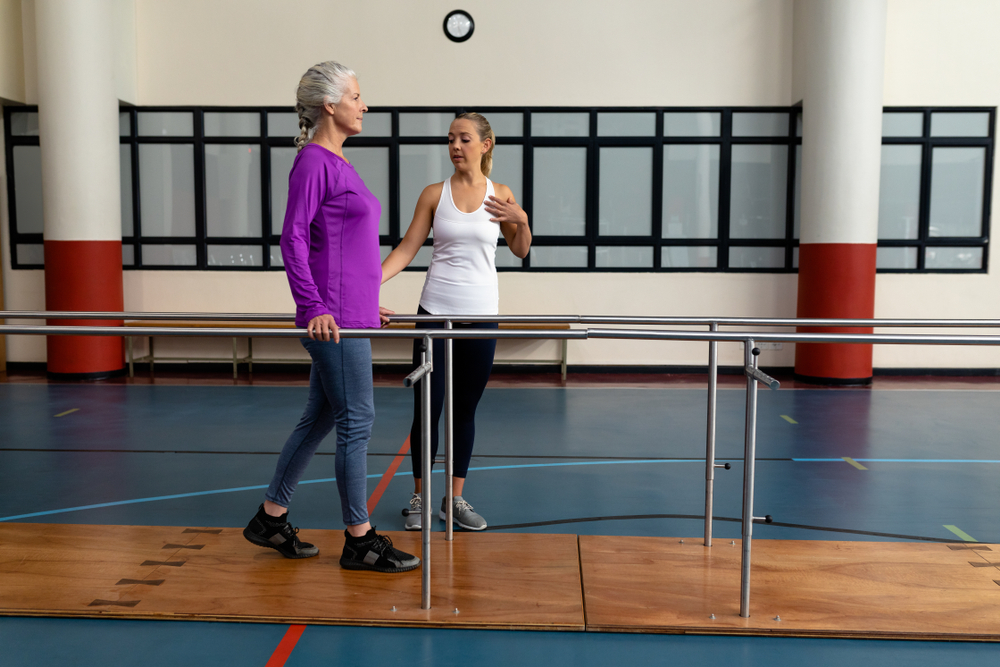Falling is a common type of incident, but they are always scary to experience. Some falls cause no injuries, allowing you to quickly bounce back onto your feet. But if you fall on a rough surface or land awkwardly, it can cause painful injuries that don’t always heal in the blink of an eye.
Many people assume that there’s nothing you can do to stop a fall because it can happen so fast, but there are steps that you can take. There’s actually a way to determine how likely you are to have a fall so that you can take the proper precautions to reduce your chances of getting hurt. A fall risk assessment is a beneficial screening tool that can help anyone worried about their balance and coordination. But how can you get one? That’s what we’re here to discuss.
We’ll talk about what a fall risk assessment is as well as how and where to get one. We’ll also discuss what to expect during the assessment.
The basics of a fall risk assessment
A fall risk assessment refers to an evaluation that determines how likely you are to experience a fall. The results can help you see if you need to explore training options to improve the aspects of your fitness that contribute to keeping you safely on your feet, such as balance, coordination and strength. It may also show that you require lifestyle changes to reduce your risk of falling, like medication adjustments or specialized footwear.
A risk assessment can be voluntary, but you may also be required to undergo the assessment by a health care provider if you’ve had recent medical issues that affect your stability.
Fall risk assessments are usually recommended for adults over the age of 65, because our bones can weaken as we age. Weakened bones not only affect your stability, but it also increases your risk of sustaining severe injuries if you fall, especially if you have preexisting medical issues.
There are many other reasons why a health care provider may recommend or require a risk assessment, including issues like:
- History of falling.
- Certain medications.
- Limited mobility.
- Vision impairment.
- Foot problems.
- Disability.
- Vestibulopathy.
- Traumatic brain injury.
- Parkinson’s disease.
- Multiple sclerosis.
- Stroke.
How to get a fall risk assessment (and where to go)
You can decide to get a risk assessment on your own if you have fallen or believe that you are at a high risk of falling, but it may also be required by your health care provider following a serious fall, hospital stay or significant medical concern that increases the likelihood of falling. Talking to your provider about completing a fall risk assessment is the first step.
A risk assessment can be completed in a variety of health care settings and carried out by health care professionals including:
- Primary care physicians.
- Nurses.
- Occupational therapists.
- Physical therapists.
What to expect from a fall risk assessment
There are several different aspects that make up a risk assessment, and they aren’t all the same. Your health care provider will determine which assessment tools will be the most conclusive based on your specific issues. It’s worth noting that many providers use an approach designed by the Centers for Disease Control and Prevention (CDC) that focuses on screening, assessing and intervention.
Fall risk assessments are likely to include both screening questions as well as assessment tests if they follow the CDC approach.
Common risk assessment questions include:
- Have you fallen in the past year?
- Do you worry about falling?
- Do you feel unsteady when you walk or stand?
You’ll likely perform tests so that the provider can evaluate your balance, strength and gait, including:
- 4-stage balance test — You’ll be instructed to go into four different standing positions to test your balance. Each position is held for 10 seconds.
- 30-second chair stand test — Repeatedly sit down and stand up from a chair for 30 seconds with your arms crossed over your chest. It tests balance as well as strength.
- Timed up-and-go — You’ll stand up from a chair and walk 10 feet before returning to the chair. This tests your gait by timing how long it takes to complete the exercise.
Panther Physical Therapy can give a fall risk assessment and help you decrease your risk of falling
The fall risk assessment can either increase your confidence about your low risk of falling, or it can provide you with the insight needed to boost your balance. We can help you with either outcome.
At Panther Physical Therapy, we can run a risk assessment, and then follow up with possible treatment options if your results show that you have a high risk. With guided exercises, you can boost the different aspects of your fitness that reduce your risk of falling, such as coordination, joint movement and strength.
Contact our team today for more information or to schedule an initial appointment.
